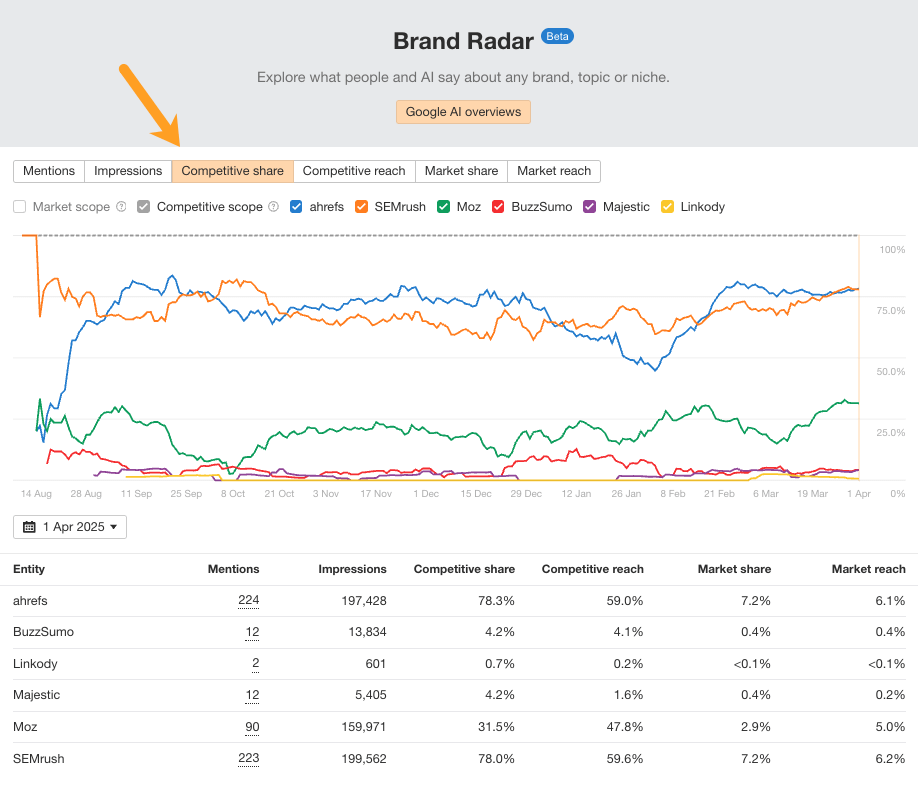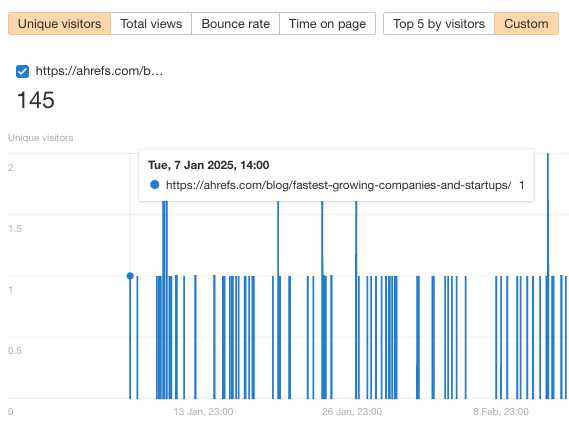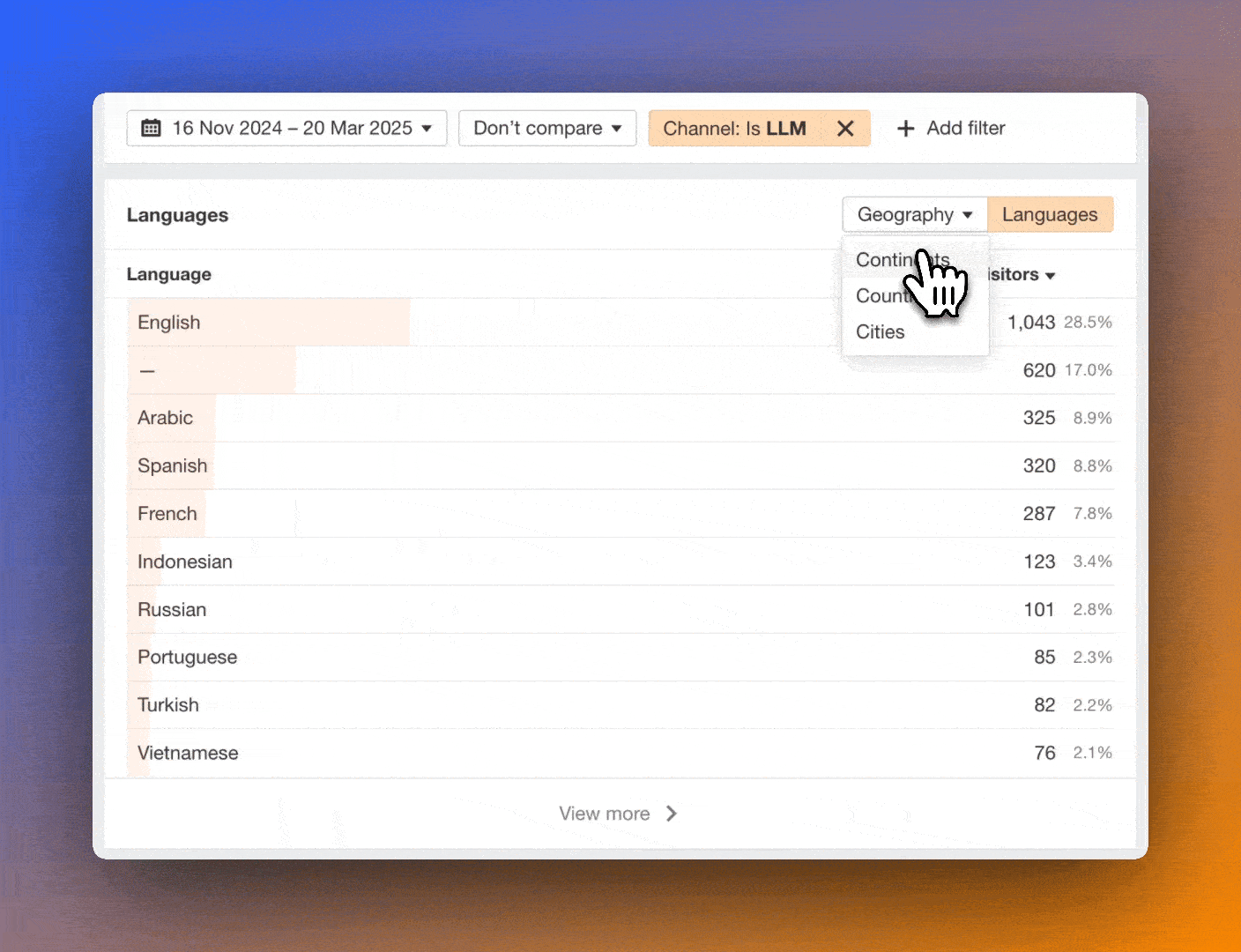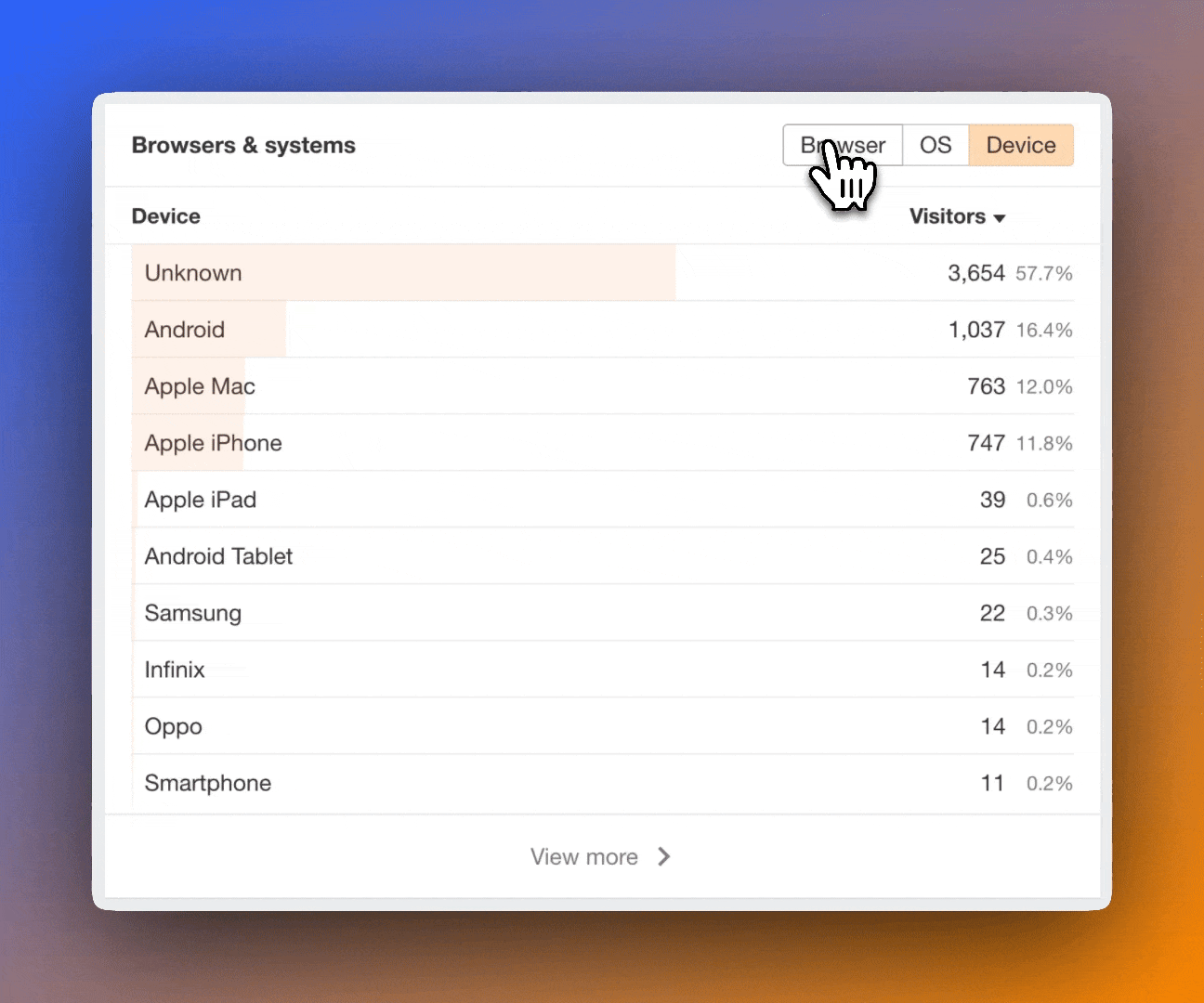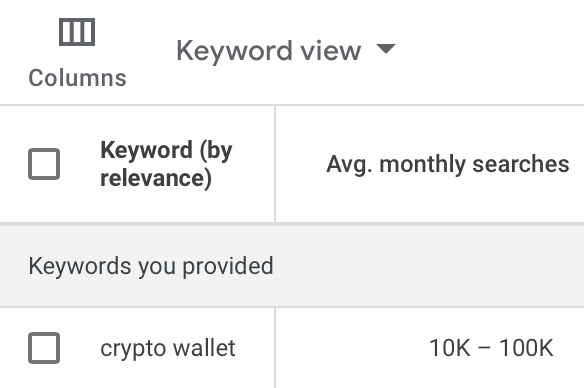AI is already a pretty formidable new growth channel, driving brand interest through mentions and even direct product/service recommendations.
But its value goes beyond just awareness—AI citations can also drive engaged traffic to your site.
Like any new referral channel, AI traffic is still finding its footing. Our research shows LLMs account for about 0.1% of traffic, though this figure is likely vastly underestimated due to AI platforms withholding referral source data.
As the technology evolves and user behavior adapts, AI traffic patterns will inevitably shift even further.
Monitoring will help you stay on top of changes and make the most of any growth.
Here’s how to track your AI traffic in GA4 and Ahrefs Web Analytics.
You can track your AI traffic in Google Analytics 4 by setting up a new channel and source.
Track AI as a traffic channel
Good AI traffic reports should be easy to dip in and out of, and understand at a peek.
To make that happen, start by setting up a channel group.
1. Find channel groups in admin
Head to Admin in GA4. Then, under “Data Display” ¹, select “Channel Groups” ².
Find the default channel group, then click on the three-dot menu next to it³ and choose “copy to create new”:
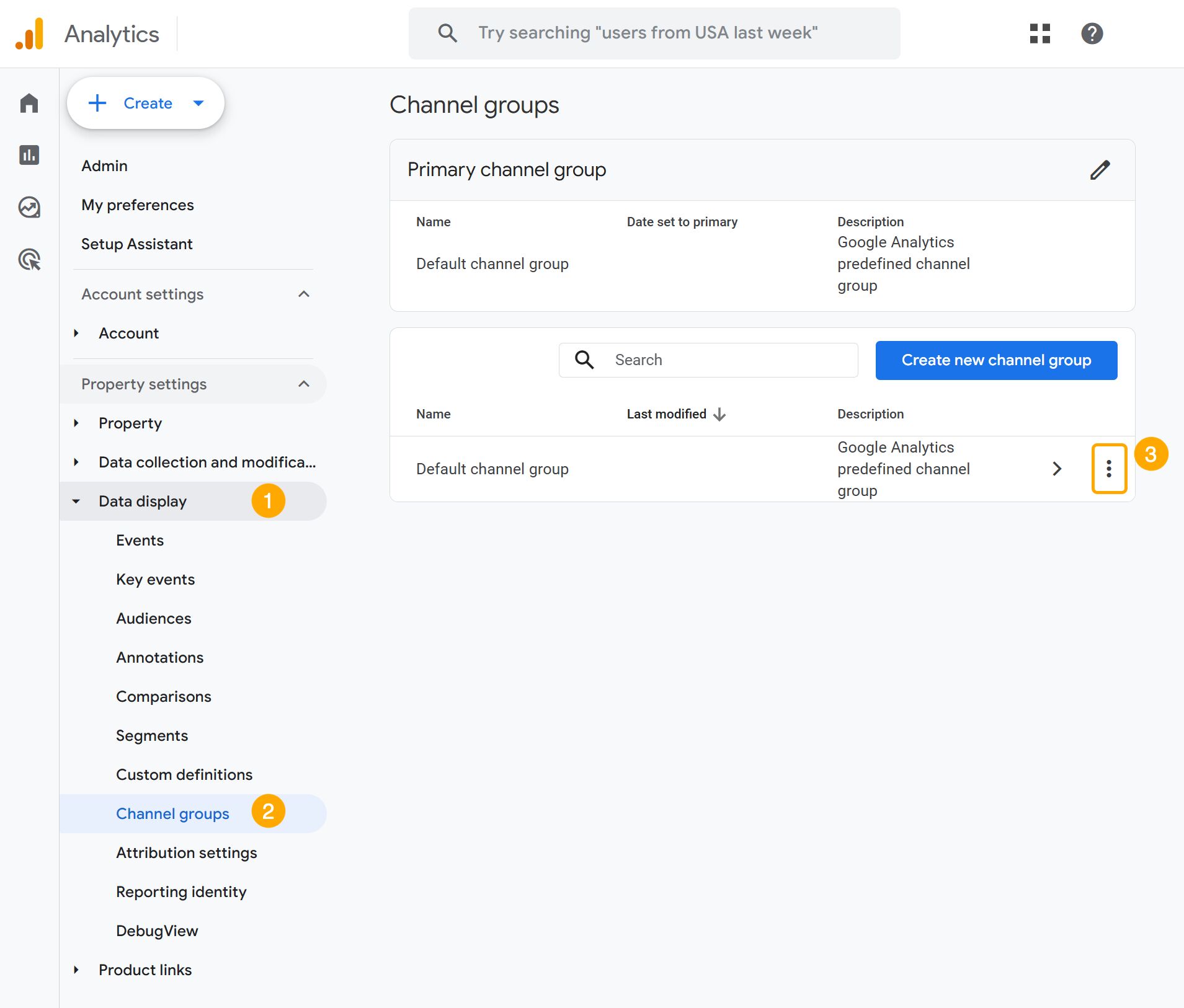
2. Create a new AI channel group and AI channel
Next, you need to:
- Name your new group “Channel group with AI”
- Click “add new channel” and call it “AI traffic”
- Set the condition “source” then select “matches regex”
- Paste this regular expression to track common AI platforms:
.*chatgpt.com.*|.*perplexity.*|.*gemini.google.com.*|.*copilot.microsoft.com.*|.*openai.com.*|.*claude.ai.*|.*writesonic.com.*|.*copy.ai.*|.*deepseek.com.*|.*huggingface.co.*|.*bard.google.com*
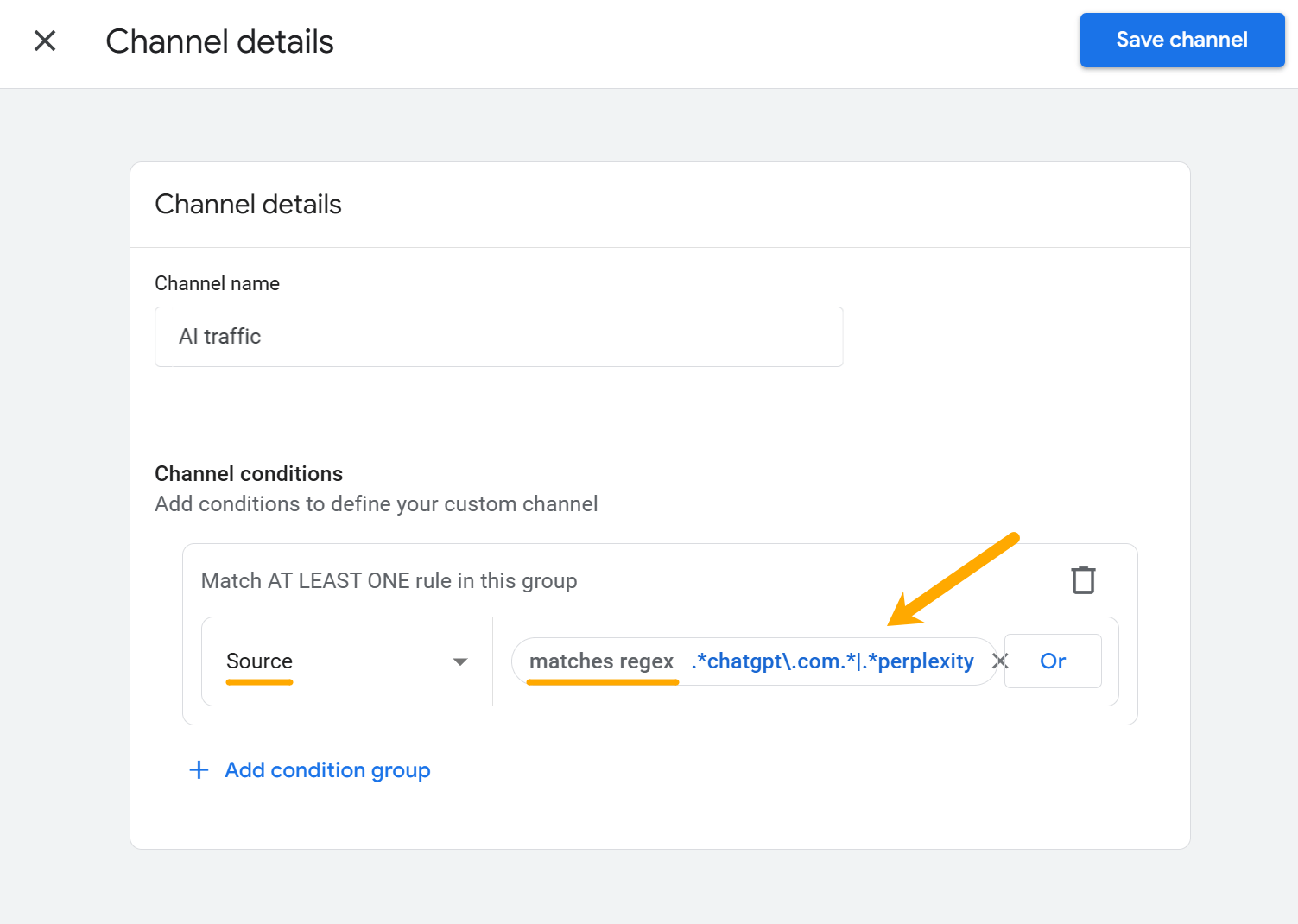
This regex will pull in traffic from ChatGPT, Perplexity AI, Google’s Gemini, and Microsoft’s Copilot, and more.
Then all that’s left to do is view your AI report.
3. View your AI traffic
Head to Reports > Acquisition > Traffic Acquisition, and make sure you select “Channel group with AI” at the top of the table.
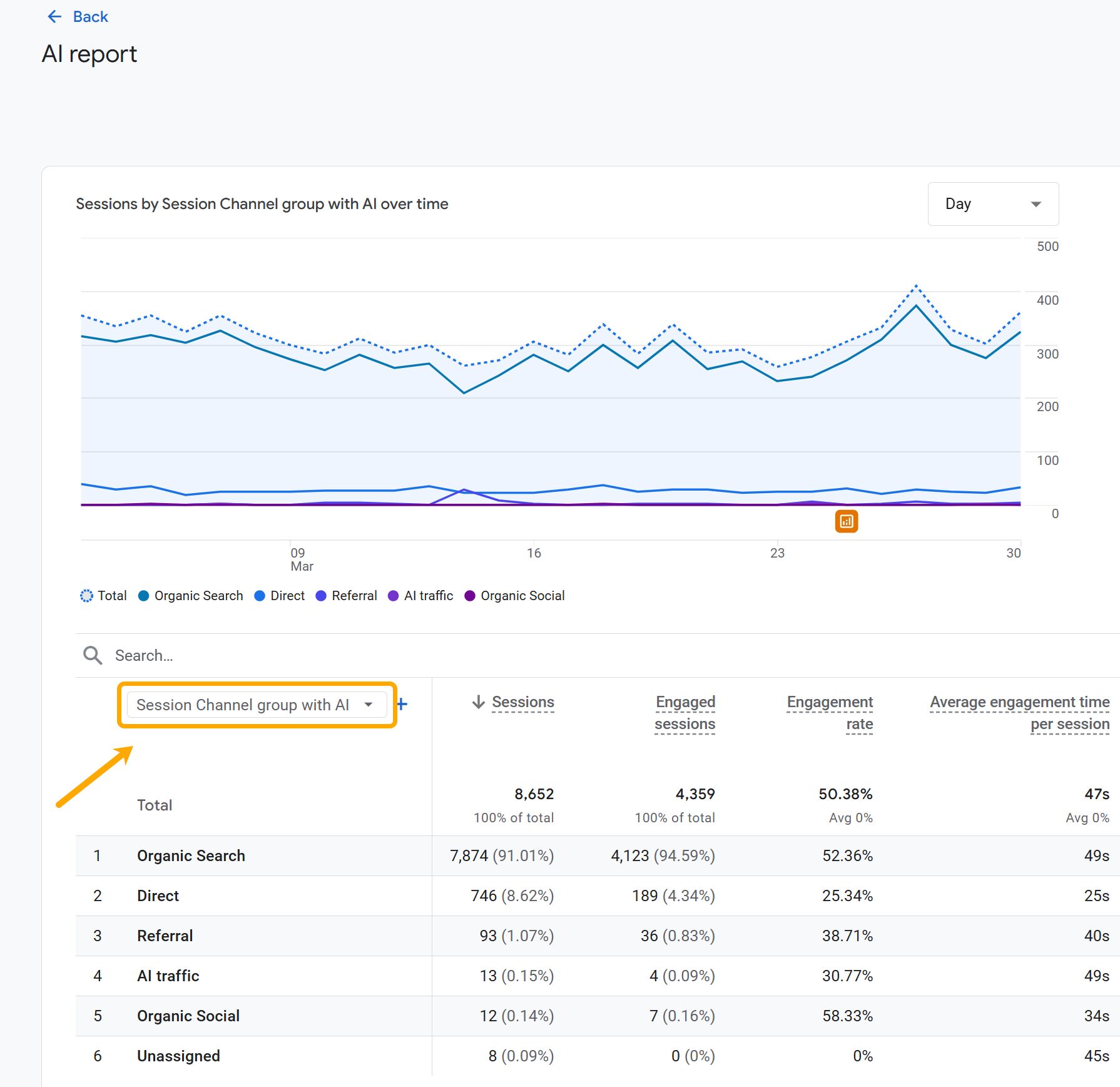
This will show you your top-level AI traffic vs. other channels.
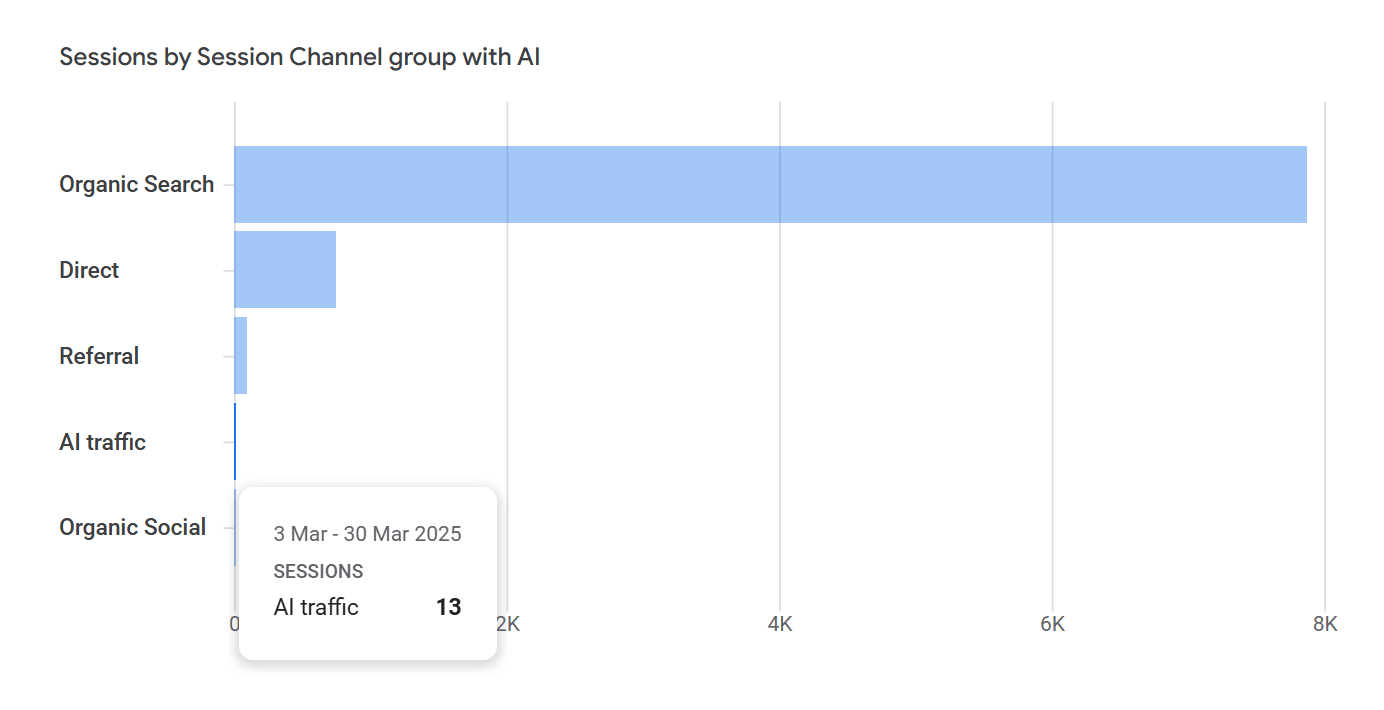
Track different AI traffic sources
Once you can see your top-level AI traffic, you’ll inevitably want to go deeper, to find out which AI platforms are sending it.
Here’s how to do that.
1. Create a custom “AI traffic sources” segment that you can revisit
Head to the “Explore” tab, then:
- Start a new exploration
- Click the “+” icon next to “Segments”
- Click “create a new segment”
- Click on “Session segment”
- Define your segment. It should look like this:
- Include sessions when:
- “Traffic source”
- “Matches regex”
- Paste the same regex you added to create your channel report:
.*chatgpt.com.*|.*perplexity.*|.*gemini.google.com.*|.*copilot.microsoft.com.*|.*openai.com.*|.*claude.ai.*|.*writesonic.com.*|.*copy.ai.*|.*deepseek.com.*|.*huggingface.co.*|.*bard.google.com*
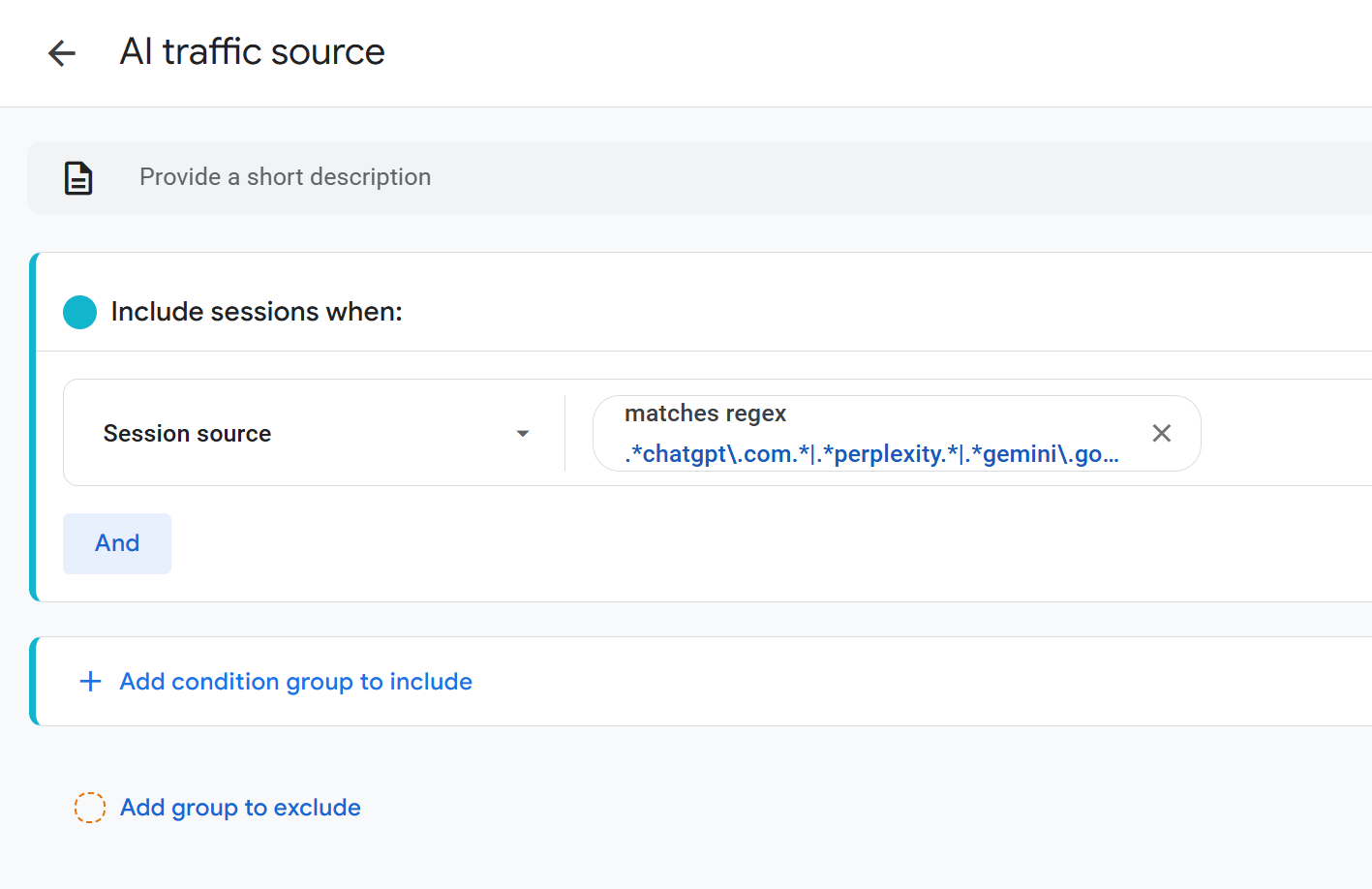
- Name this segment “AI traffic source”
- Click “Apply”
- Your new custom segment should now be visible under “Segments” on the far left (above “Dimensions”)
Once your revisitable “AI traffic sources” are set up, it’s time to start reporting.
2. View your “AI traffic sources” trended over time
To configure your report:
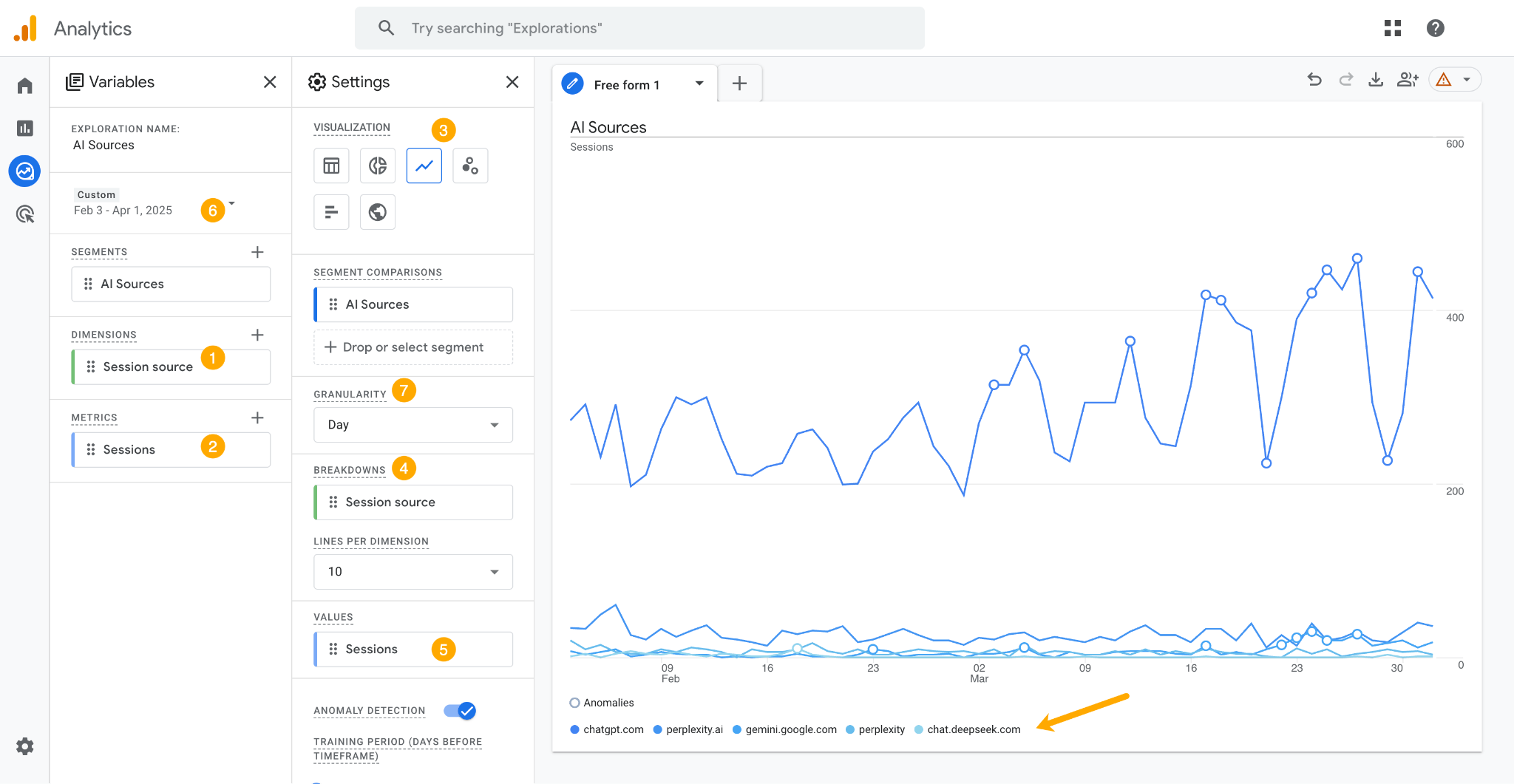
- Set dimension: Choose “Traffic source”
- Set metrics: Choose “Sessions”
- Set visualization: Choose the line chart icon
- Set breakdown: Choose “Session source/Medium” as the breakdown dimension
- Set values: Choose “Sessions”
- Adjust the date range: Choose your preferred date range
- Set the granularity: Choose daily, weekly, or monthly
Or, instead of all that jiggery-pokery and manual configuration, you can just view a pre-built report in Ahrefs Web Analytics…
Ahrefs Web Analytics is a privacy-friendly Google Analytics alternative.
Here are three ways it compares with GA4:
- Easier: In seconds, Web Analytics gives you access to fully configured reports (e.g. top channels, sources, pages, regions, devices) that would take much longer to build in GA4.
- Faster: Google Analytics delays visitor data by 24-48 hours. Ahrefs Web Analytics shows events within 1 minute, giving you real-time visitor insights.
- Lighter: Google Tag Manager weighs ≈98kb and can grow with updates. Our script stays under 2kb, ensuring your site remains fast and efficient.
Once you’ve added a snippet of code to your site, viewing your AI traffic in Ahrefs Web Analytics is as easy as clicking a button.
Here’s a quick video of how you can set that up.
Now let’s get into some deep-dive AI traffic analysis.
For the rest of this article, we’ll be focusing on different Ahrefs Web Analytics reports and use cases.
